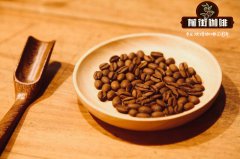What is white honey, red honey, black honey treatment and their respective flavor characteristics Description
Professional coffee knowledge exchange More coffee bean information Please pay attention to coffee workshop (Weixin Official Accounts cafe_style)
The honey process is a process intermediate between sun and water washing, most popular in Central America. It combines washing and sun. It removes the skin of the coffee and retains some pectin outside the coffee beans. It then dries and mechanically removes the parchment to obtain the coffee beans.
After removing the outer pulp of coffee beans, it will produce a sticky gelatinous substance, which needs to be washed away with plenty of water by washing treatment method. Due to limited water resources in some areas, this direct drying method has appeared. However, honey treatment method is easy to be contaminated during the treatment process, so it is necessary to closely watch and repeatedly turn it many times during the treatment process to avoid bad fermentation flavor.
Next, do you know what white honey, red honey, black honey processing is, and what is their origin?
According to the thickness of pectin removal and the length of sunlight, honey treatment is divided into white honey, red honey and black honey treatment.
1. Depending on the proportion of pectin retained:
White Honey usually removes 80 -90% of the pectin.
Red Honey basically retains all pectin and has no fermentation.
Black Honey basically retains all pectin and dries at low altitude.
Simply put, white honey leaves less pectin after washing, while red honey and black honey retain more pectin, which makes coffee have a better body.
Second, depending on the length of light and drying time:
Red honey needs to be dried under shade, takes longer to dry, usually develops during cloud cover, and usually takes about 12 days to dry.
Black honey needs to be dried in a more shady place, takes the longest time, usually a little more than a week, and is covered with black plastic tarpaulin. The black honey processing process is the most complicated, but the most expensive.
Third, in terms of flavor:
Black honey processing flavor sour and sweet feeling obvious, with fruit juice flavor.
Red honey processing flavor is more balanced, with grape flavor.
The yellow honey processing flavor is relatively clean, with citrus flavor.

end
Important Notice :
前街咖啡 FrontStreet Coffee has moved to new addredd:
FrontStreet Coffee Address: 315,Donghua East Road,GuangZhou
Tel:020 38364473
- Prev

Why do coffee beans at high altitude have higher hardness and the conditions for planting coffee trees?
Professional coffee knowledge exchange more coffee bean information please pay attention to the coffee workshop (Wechat official account cafe_style) why it is said that high-altitude coffee beans have higher hardness, the reason is that coffee beans are nutritious and have a long fruit growth cycle, just like most plants. Coffee beans themselves are the fruits of small shrubs, while the altitude is relatively low and the growth rate is relatively low.
- Next

More than 90% of Chinese people have lactose intolerance. Why do so many people drink lattes?
Professional coffee knowledge exchange More coffee bean information Please pay attention to coffee workshop (Weixin Official Accounts cafe_style) Are you used to drinking coffee outside, just want a latte? According to various survey reports, Chinese people like milk coffee more than other black coffee. But you know what? A number of surveys and studies over the decades have found that adults across China
Related
- Beginners will see the "Coffee pull flower" guide!
- What is the difference between ice blog purified milk and ordinary milk coffee?
- Why is the Philippines the largest producer of crops in Liberia?
- For coffee extraction, should the fine powder be retained?
- How does extracted espresso fill pressed powder? How much strength does it take to press the powder?
- How to make jasmine cold extract coffee? Is the jasmine + latte good?
- Will this little toy really make the coffee taste better? How does Lily Drip affect coffee extraction?
- Will the action of slapping the filter cup also affect coffee extraction?
- What's the difference between powder-to-water ratio and powder-to-liquid ratio?
- What is the Ethiopian local species? What does it have to do with Heirloom native species?

